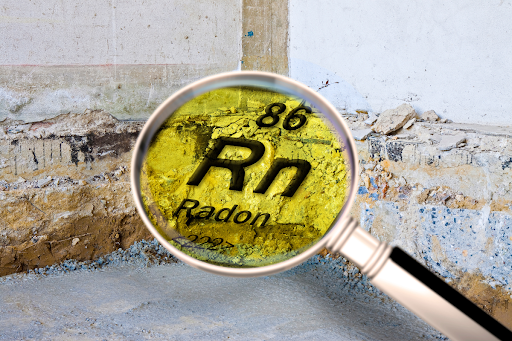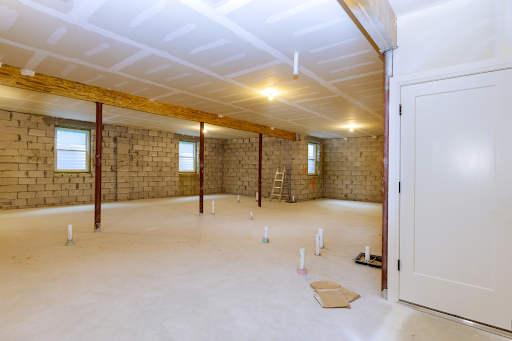|
Radon can easily get into your home through cracks and in the foundation of your home. While many people install a radon mitigation system to control radon levels, others try to use epoxy coating on the basement walls and basement floors as a method to combat elevated levels of radon. But are floor sealing systems any effective? If yes, then how would we seal cracks in the basement floor to stop radon? Stick till the very end of this article to find out! Radon Gas: An OverviewRadon is a radioactive gas formed by the break-down of radioactive elements such as uranium. This is a colorless, odorless, and an inert gas, which makes its detection quite tricky unless you are using a dedicated tool. This is a naturally occurring gas, so people are almost always exposed to it. It usually seeps into the buildings through the gaps and cracks in the basement and accumulates over time. Radon dilutes itself in the surrounding air, and then starts to cause many health problems. Prolonged exposure to radon increases the chances of lung cancer by 14%. According to the EPA, radon causes over 20,000 lung cancer deaths every year in the US alone. Can Radon Enter Your Basement?Radon usually enters your house through the basement, and it emanates when uranium found in soil naturally decays. Since it is produced from the soil, it finds easy access indoors through the cracks in your basement. The pressure difference between the outside and inside area of your home creates a vacuum. This vacuum pulls radon through the cracks or holes in your basement. Radon can enter your house through:
However, you will need a special instrument or test kits to accurately determine the concentration of radon in your house. Will Sealing My Basement Help?Yes, you can reduce the level of radon in your basement by sealing the cracks. The only prerequisite is that your house must have a radon mitigation system to manage the level of radon in the house. You must also keep in mind that you should seal the whole floor rather than the cracks. This is because, over time, the flooring can develop new cracks, allowing the radon to enter the house. Hence, covering the basement flooring with the help of the sealant reduces the changes of new cracks and reinforces the floor again. Also, as per the EPA, you must use a sub-slab depressurization system to remove all the radon gas present beneath the basement flooring before sealing it. This system extracts the extra radon and vents it off in the air with the help of the fan. Once the extra gas is removed, you can seal the basement floor and reduce the level of radon in your house. How To Seal The Cracks In The Basement FloorThe foundation of your house is one of its most important components. Thus, while laying down the foundation of the house, special emphasis is put on it, but no matter what you do, it develops cracks over time. Since these cracks are sufficient for the radon gas to escape into your house, it is essential to seal these cracks in the basement. You can follow these steps to seal the cracks in the basement floor for radon: 1. Clean The AreaBefore applying any sealant on the basement floor, you must clean the floor properly. Cleaning is essential so that the sealant can stick to the floor properly. You can prepare a solution of dish soap and warm water and then scrub the surfaces with the help of a scrub brush. If your floor has mold growth, you must use a bleach solution, mold remover, or baking soda solution for scrubbing. Once you have removed the mold, wait for the floor to dry so as to avoid mold growth again. In addition, if your floor has been painted over it, you must remove the paint with the help of a paint stripper. Once you have removed the paint, you can scrub the surface. 2. Check For OpeningsNext, you must locate all the openings and cracks on the flooring. These openings and cracks act as a place for the radon to seep in. Therefore, it is essential to waterproof the foundation and prevent possible leaks. You can fill these openings and cracks with caulk or hydraulic cement. After applying the mixture of caulk or cement, you must wait for the mixture to dry and solidify. 3. Checking The Surrounding Of The BasementYou must go through all the corners of your basement properly to identify any more cracks. You should also look for all the water sources present outside or inside the basement. Relocate all the plants and fix the damaged gutters and downspouts. 4. Applying The SealantOnce you are done with patching the basement floor and removing all the water sources, apply one to two coats of the sealant. You can choose the sealant as per the surface of the basement. Use a roller or paint brush to apply the sealant uniformly on the flooring. Summing UpRadon gas can enter your house through any gap, crack, or cavity in the wall. It becomes necessary to close the cracks and seal them. Otherwise, radon gas can harm you and your loved ones. Regularly inspect the flooring and the walls to ensure they have no holes or cracks.
Lastly, you should get your floor sealed even if you have a mitigation system in place already. This is because sealing helps in dehumidification, dust-proofs the slab and improves usability. If the area is too large, consider hiring a professional instead.
0 Comments
Leave a Reply. |
AuthorI am a professional radon technician who enjoys writing about radon to spread awareness of this harmful, radioactive gas. Archives
February 2023
Categories
All
|



 RSS Feed
RSS Feed
